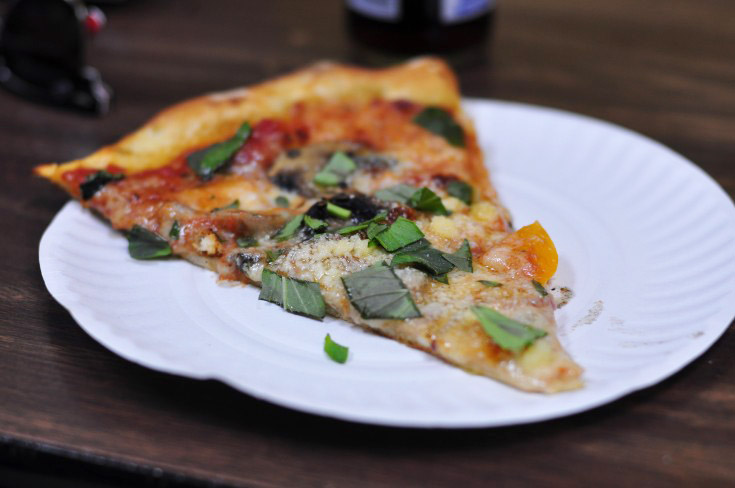
This week's episode of The Sporkful podcast is up! Listen through the player or iTunes/Podcasts app. (And please subscribe!)
Have you ever waited in a crazy long line for some famous pizza, or donuts, or barbecue?
Was it worth it?
This week on The Sporkful, Dan visits Di Fara Pizza, a legendary Brooklyn pizzeria that’s famous for their slices -- and their line.
Why would anyone wait an hour for pizza -- especially in a city with no shortage of good slices?
Well, it's all part of our larger mission to answer this burning question:
When you wait for a long time to eat, do you enjoy your food more -- or less?
Seems simple, right? But when you consider all the angles here, it gets more complicated.
For one thing, there's a whole branch of mathematics, called Queueing Theory, devoted to studying the mechanics and psychology of waiting in line.
"The longer the wait, the higher your expectation is of the quality of service you’re about to get," says MIT Professor Dick Larson, known as the world's foremost expert on lines. "If you’re willing to wait an hour for a piece of pizza, that piece of pizza better be very very good."
Otherwise, as one of our fellow line-waiters at Di Fara -- a woman named Lisa -- put it:
"After a certain amount of time [waiting] turns into aggravation, and that is a thin line."
Then there's your body, which has a physiological need for food. What happens to you physically when you stand in line hungry for so long, waiting to eat?
"While you’re standing in line waiting to eat in the restaurant, you may feel hungry at times; you may stop feeling hungry," says Dr. Mark Friedman, who spent years studying appetite at the Monell Chemical Senses Center in Philadelphia. "You’re not feeling hungry but you’re still hungry physiologically."
And don't forget that restaurants are businesses. Customers may grumble about waiting, but a long line guarantees good profits and lots of publicity.
Di Fara's owner Dom DeMarco (above and below) doesn't deny that:
"I like it like this. I make a lot of pies, customers wait a long time," he says. "Sometimes when you come out here [to eat at Di Fara], you gotta take a day off."
(For much more on the economics of waiting in line, check out this week's Freakonomics episode -- also featuring Dan's "Pizza Odyssey"!)
Last, and perhaps most important (for us here at The Sporkful), there's deliciousness.
Serious Eats founder Ed Levine knows a thing or two about that. (Ed ate thousands of slices in the course of writing a whole book about pizza. He's also the host of the Serious Eats podcast, Special Sauce.)
Ed joined Dan in line at Di Fara that day, and he says the pizza there is special:
"[Dom DeMarco] cuts the basil, he cuts the oregano, he uses two or three different kinds of cheese," Ed says. "There are qualitative differences. Whether it’s worth the wait, it is a unique slice."
So was it worth the wait -- psychologically, physiologically, and economically -- to get a taste of this illustrious Brooklyn pizza??
Listen in to the full episode to hear the verdict from Dan and Ed and some of the other folks in that famous line at Di Fara Pizza.
This week's episode of The Sporkful podcast is up! Listen through the player or iTunes/Podcasts app. (And please subscribe!)
Connect with me on Twitter, Instagram and Facebook!
Interstitial music in this episode by Black Label Music:
- "Give It Up" by Stephen Clinton Sullivan
- "Sun So Sunny" by Calvin Dashielle
- "Feel Real Good" by William Van De Crommert
- "Scrambloid" by Kenneth J. Brahmstedt
- "New Old" by JT Bates
Photos: Dan Pashman; FlickrCC/Lucas Richarz; FlickrCC/wee.eats; FlickrCC/Olaf








